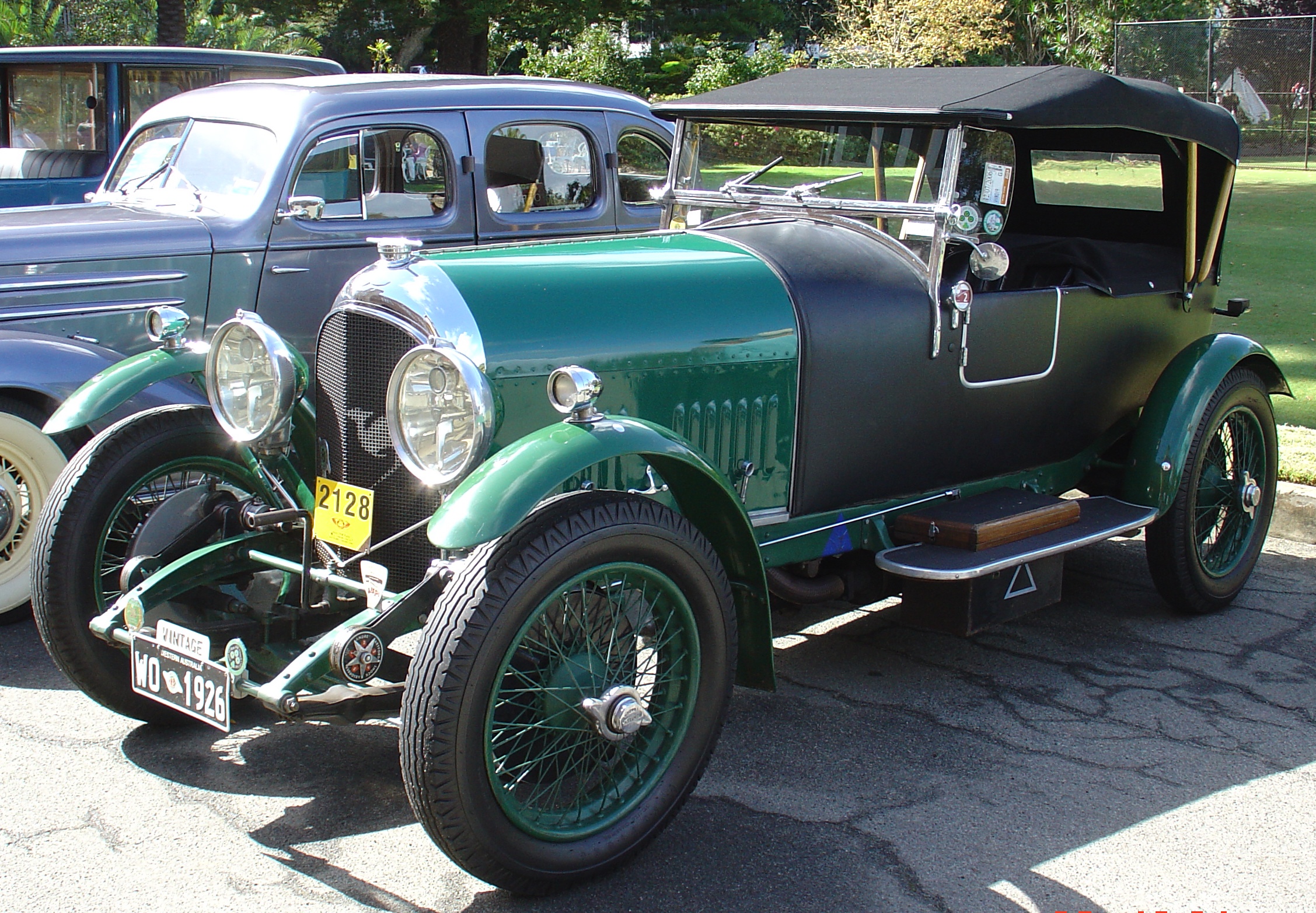The vintage era in the automotive world was a time of transition. The car started off in 1919 as still something of a rarity, and ended up, in 1930, well on the way towards ubiquity. In fact, automobile production at the end of this period was not matched again until the 1950s. In the intervening years, most industrialized states built nationwide road systems with the result that, towards the end of the period, the ability to negotiate unpaved roads was no longer a prime consideration of automotive design.
Cars became much more practical, convenient and comfortable during this period. Car heating was introduced, as was the in-car radio. Four-wheel braking from a common foot pedal was introduced, as was the use of hydraulically actuated brakes.[1] Power steering was also an innovation of this era. Towards the end of the vintage era, the system of octane rating of fuel was introduced, allowing comparison between fuels. In 1923 the gasoline additive Ethyl made its debut at the Indy 500 that resulted in a boost in octane from the 50's to the 80's[2] In the United States drive-in restaurants were introduced as well as suburban shopping centers and motels.
Alfred P. Sloan and Harley Earl of General Motors, and Walter P. Chrysler capitalized on advertising the automobile’s role in the life of the consumer for more than just the utilitarian value compared with the horse. The stock market crash of 1929 started the layoff of automotive workers and many new companies went bankrupt but over two million cars were still produced in 1929 and 1930.[3] Horatio Earle, known as the "Father of good roads" had proposed the government create an Interstate highway system in 1902 and in 1909 built the World's first mile of concrete road on Woodward Avenue in Detroit.
Investment
Comedian and avid car collector Jay Leno stated, "Any car can be a collector car, if you collect it."[9] Antique car collecting as an investment can be rewarding but most serious investment collectors seek rare or exotic cars and original unmodified cars hold a more stable price. Collecting as an investment requires expertise beyond enthusiast collecting and the standard of quality is far higher as well as a need for investment protection such as storage and maintenance. A short-term investment collector must be able to find a vehicle that has market value that is expected to rise in the foreseeable near future. A long-term investment collector would be less interested in any short-term value seeking to capitalize on an expected value rise over a period of years and a vehicle must have certain intrinsic values that are common to other investors or collectors of both short and long term.
Rarity
Antique vehicles have a higher value according to the rarity that usually (but not always) resulted in some reason for a lack of numbers at production. Certain year and model cars became popular to turn into hot rods thus destroying the original condition. Other models were produced in such quantities that the price is still not inflated. Market trend is an important part in the price of a vintage car. An "almost" original and in perfect shape model A that was abundantly produced can be purchased for $20,000.00.[10] A collector as an investor would have to know the potential market and have a belief that the future market will bring a return on an investment. Many collectors also tend to have a direction or like for certain vehicles that reflects their expertise.
Condition categories
To collectors and investors, a vehicle's condition rating[11] is important, and there are two systems, the category and the points system. The category system has six categories used to rate the condition of a vehicle. The points system assigns points from 40 to 100 that corresponds with the category system and below 40 there are three for other conditions. Both systems are listed together for ease of comparison:
Category I, Perfect; 90 to 100 points. A vehicle is considered as good or better than the day produced.
Category II, Excellent; 80 to 89 points. A vehicle in excellent original or superior restored, near-flawless condition.
Category III, Fine; 70 to 79 points. A vehicle with an older restoration or an original car with minimal wear. These are considered "show quality".
Category IV, Very good; 60 to 69 points. A vehicle that is in complete original condition, or possibly an older restoration, that is usually a well-cared-for daily driver.
Category V, Good; 50 to 59 points. A vehicle that shows wear, needs attention or work, and needs only minor restoration, with no major flaws. Points from 40 to 59 fall into this category.
category V, Driver; 40 to 49 points.
Other categories
Restorable; 30 to 39 points . This vehicle would be in need of restoration of the motor, body, interior and/or chassis. A car in this class should be more or less complete, needing some parts but requiring a tremendous amount of work to get to show quality.
PARTIAL; 20 to 29 points. This vehicle would require extensive restoration with a significant amount of parts and labor—a very time-consuming and costly prospect.
PARTS CAR; 10 to 19 points. This would generally be an inoperative vehicle in poor condition, kept as a source or 'donor' of spare parts. With the exception of very rare vehicles, complete restoration of this category is usually not feasible.







0 comments:
Post a Comment